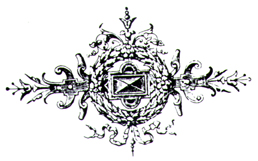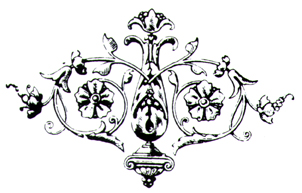
[INTRODUCTION]
Friar Juan Gonzàlez de Mendoza [°1545-†1618] set off for the New World when only seventeen years old, having just joined the Augustinian Order, and then dedicated himself to the studies in Mexico City for several years. The Spanish had firmly established themselves in the Philippines in 1565, putting into effect from then on a regular movement of men and merchandise between Spain and its distant possessions in the Far East. From Manila missionaries and conquistadores began to cast avaricious glances to the wealthy Asian Empires where the Portuguese had been trading since the dawn of the sixteenth century, and from then on projects came up for Spanish intervention in China and Japan. In 1574, Gonzàlez de Mendoza was appointed to accompany to Madrid one of his coreligionists who was returning from the Far East and who intended requesting permission inform King Felipe II of Spain(Filipe I of Portugal) [°1527-r. 1554(S)/r. 1580(P)-†1598] to search for the Middle Kingdom.
The Portuguese missionary's interest in Chinese affairs would have began then, which he would never give up cultivating in the years that followed. As a result, in 1581 he was nominated by the monarchy to command a Spanish diplomatic mission to Beijing • and in the middle of that year he was already back in Mexico again, making preparations for his journey. However, this mission never came to fruition, perhaps because in the meantime [1580] Felipe II of Spain (Filipe I of Portugal) had taken over the Portuguese throne as well, committing himself, in compensation, to maintain total separation between the overseas interests of both Iberian Crowns. The diplomatic trip to China, as a result of that royal pact, was no longer a priority. Meanwhile, Gonzàlez de Mendoza ended up setting off for Rome where in 1584 he made the last changes to the weighty manuscript of a work which would be published there following year as, the Historia De Las Cosas Mas Notables, Ritos Y Costumbres Del gran reYno de La China [...] (The Historie of the Great and Mightie Kingdom of China [...]). The fortunes of fate took him to the Americas on two more occasions and it was there that he died.
Gonzàlez de Mendoza's Historia [...] (The Historie [...]) — in spite of the author having never stepped foot on Chinese soil— had extraordinary and immediate success among learned circles, and was the object of consequent reeditions and translations in several European countries, at least forty in the short space of fifteen years. Curiously one of the least quoted reeditions was printed in Lisbon in 1586. Underneath this tremendous publishing success was an immense and detailed documental study carried out by this friar, equally in Spain and in the New World, and it was based not only on works of Portuguese origin, like the Década da, Ásia — III (Decade of Asia — III) by João de Barros (See: Text 9 —João de Barros) and the Tratado das Cousas da China [...] (Treatise in which Things of China are related at great length [...]) by Gaspar da Cruz (See: Text 11 — Gaspar da Cruz), but also from conversations he had with Spanish people who had taken the opportunity to travel to China. Among Gonzàlez de Mendoza's main informers, directly or indirectly, were members of three Spanish missionary expeditions which for various reasons had disembarked on soil of the Middle Kingdom after the Spanish had established themselves in Manila.
It is worthwhile to point out the special contribution of Friar Martín de Rada who visited the Fujian• province in 1575, and who could very probably be considered as the first European sinologist. During his adventurous journey this Augustinian had the opportunity of acquiring an important collection of published works in Chinese and he would in fact later translate them in an interesting and precocious attempt to decipher the secrets of Chinese reality based on original sources from there. The manuscripts prepared by Martín de Rada, including a work Arte y Vocabulario de la Lengua China [...] (The Art and Vocabulary of the Chinese Language [...]), which disappeared, were not printed at that time. However this missionary's work was duly made good use of and singled out by Gonzàlez de Mendoza, who had the most extensive description of Chinese life and customs produced in the sixteenth century printed. The passage which follows is transcribed from accounts contained in this Chinese library already referred to and acquired by the Spanish Friar.

*First edition: Rome, 1585.
start p. 139
end p.